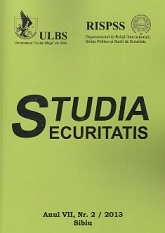PRACTICI MUZICALE ÎN VIAŢA ARMATEI ŞI A CURŢII DOMNEŞTI REFLECTATE ÎN OPERA LUI DIMITRIE CANTEMIR
MUSICAL PRACTICES OF ARMY AND ROYAL COURT LIFE REFLECTED IN CANTEMIR’S WORKS
Author(s): Victor GhilaşSubject(s): Politics / Political Sciences
Published by: Editura Universitatii LUCIAN BLAGA din Sibiu
Keywords: Dimitrie Cantemir; Army Music; Mehterhanea; Tabulhanea; Royal Court
Summary/Abstract: The purpose of this study is to investigate less researched problems in the musicological literature. Army and royal court music was a fundamental part of Dimitrie Cantermir’s works. As part of the Ottoman army, it has a rich history, becoming an important element ever since the period of apogee of the classic medieval Muslim civilization. With the increase of the Ottoman political and economic influence in the second half of the XVIth century, Oriental music quickly begins to play an important role in the culture of the Romanian principalities. Judging by the information provided in Dimitrie Cantemir’s Descriptio Moldaviae, one can conclude that the urban environment (primarily the royal court and the noblemans’ salons) was the main place of expression of Muslim art. This expansion occurs mainly via “musica turcica” (as Cantemir calls it), meaning the military music called tabulhanea or mehterhanea. According to Cantemir’s observations, the military music could be heard at various events: army trainings, lords’ inaugurations, official events, large ceremonies, councils, receptions of ambassadors, etc. Cantemir’s works are therefore an important source of documentation indicating the importance of the military music in the social, political, and cultural lives in the Ottoman Empire and in the Romanian principalities.
Journal: Studia Securitatis
- Issue Year: 2013
- Issue No: 2
- Page Range: 189-198
- Page Count: 10
- Language: Romanian
- Content File-PDF

